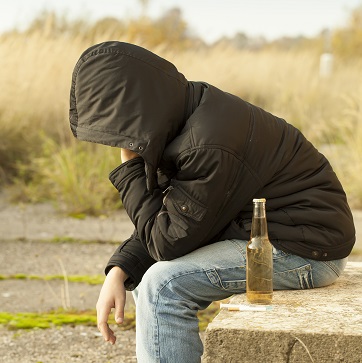Homelessness is a socioeconomic condition that directly affects well over a million Americans in any given year. For a number of reasons, homeless people are significantly more likely than the rest of the population to develop serious problems with substance abuse or addiction. In a study published in September 2013 in the journal Addiction, researchers from the RAND Corporation examined the types of social connections that help define the ways in which homeless teenagers and young adults use or abuse drugs or alcohol.
Homelessness Statistics
No one really knows how many people in America are homeless at any particular point in time. However, according to recent figures compiled by the federal Substance Abuse and Mental Health Services Administration (SAMHSA), on a representative day in 2010, at least 400,000 individuals in the U.S. didn’t have a fixed home address and either lived on the streets or in some sort of shelter or temporary housing. In a 12-month period that overlapped parts of both 2009 and 2010, more than 1.5 million people qualified as homeless. Some homeless people only lack permanent housing for relatively short amounts of time; however, on a typical day, more than 100,000 Americans lack permanent housing on a long-term basis.
Who Makes Up For Most Of The Homelessness In America?
In the U.S., men and boys experience homelessness almost twice as often as girls and women. Almost 22 percent of all homeless Americans are children or teenagers below the age of 18. Young adults between the ages of 18 and 30 make up another 23.5 percent of the U.S. homeless population. However, adults between the ages of 31 and 50 have the highest overall rate of homelessness. In descending order, the three American ethnic groups most likely to experience homelessness are non-Hispanic whites, African-Americans and Hispanic whites.
Homelessness And Substance Abuse
Current estimates indicate that as many as 50 percent of all long-term homeless Americans are affected by serious problems with substance abuse or substance addiction. When rates for drug- or alcohol-related issues in time periods before or after homelessness are taken into account, this figure rises to more than 80 percent. In many cases, problems with substance abuse or addiction appear before homelessness occurs and contribute to the changing life circumstances that cause an affected individual to lose his or her attachments to a permanent home. However, in other cases, the difficulties of homelessness contribute to the onset of excessive, dysfunctional drug or alcohol consumption. Mental illness is also a frequent contributor to the declining life circumstances of homeless people.
Social Connections Important Regarding Drug Use
In the study published in Addiction, the RAND Corporation researchers sought to identify the people who are most likely to participate in drug or alcohol use with homeless teenagers and young adults. They conducted their work with the help of 419 homeless people between the ages of 13 and 24 from the greater Los Angeles area. Each of these individuals was asked to name 20 people whom they interacted with socially. In addition, the participants were asked to detail their 20 social contacts’ relevant background information and level of involvement with drug or alcohol use.
After examining their data, the researchers concluded that, in descending order, homeless youths are most likely to engage in alcohol use with their intimate sexual partners and people in their social circles who use drugs, engage in dangerous sexual practices, act as opinion formers, provide some sort of physical or emotional support, and have popular social standing. They also concluded that, in descending order, homeless youths are most likely to engage in drug use with their intimate sexual partners and people in their social circles who drink alcohol, engage in dangerous sexual practices, act as opinion formers, provide physical or emotional support, and have popular social standing.
The Significance Of Homelessness And Substance Abuse
Based on their findings, the authors of the study concluded that homeless teenagers and young adults tend to share drug and alcohol use with peers who have more than one clear risk for substantial problems with health or well-being, as well as with peers who in some way dominate or determine the ways in which they view and interact with the world. The authors believe that public health officials and abuse/addiction specialists can use this information as the basis for improved efforts to reach homeless youths affected by substance use/abuse and reduce their chances of developing or continuing dangerous patterns of drug or alcohol intake.
Read About How Volunteering Can Aid Your Own Recovery
Denial is a classic hallmark of addiction. Addicts cause themselves harm, they damage relationships with people they love, they get into legal trouble and financial trouble as well, and yet many will claim not to have a problem with drugs or alcohol. This is called denial, and while it is not a part of every addict’s arsenal, it is a very common defense mechanism. Until the veil of this denial can be lifted, an addict is unlikely to get help. By recognizing the signs of denial you can learn to help your loved one come to the realization that he needs help.
Is It Denial Or An Outright Lie?
 Lying is a conscious act meant to deceive. Your loved one may lie to you all the time. Lying is another defense mechanism used by addicts. To hide just how bad the problem is, he may lie to you about any number of things. To be in denial, however, is different. If your loved one is in denial, he truly believes that he doesn’t have a problem. It is frustrating to deal with an addict in denial, but realize that he is not trying to hurt you. He simply can’t see the extent of his problem.
Lying is a conscious act meant to deceive. Your loved one may lie to you all the time. Lying is another defense mechanism used by addicts. To hide just how bad the problem is, he may lie to you about any number of things. To be in denial, however, is different. If your loved one is in denial, he truly believes that he doesn’t have a problem. It is frustrating to deal with an addict in denial, but realize that he is not trying to hurt you. He simply can’t see the extent of his problem.
What Is Denial?
There are several different forms that denial can take. If you are dealing with someone who is in complete denial about his problem, he is totally oblivious to the harm that his drinking or drug use is causing. You may also be dealing with a case of partial denial. Addicts who only partially believe they have a problem may recognize that their drug use or drinking is a bad habit, but may deny the issues it is causing. Perhaps the most harmful type of denial occurs when the addict fully admits to having a problem, but denies needing any alcohol abuse help.
How Can You Recognize Denial?
Addicts are very good at behaving as if everything is fine. They strive to hide the damage that their addictions cause and present a normal face to the world. If you think your loved one is in deeper than he is letting on, look for signs that he is in denial of the severity of his problem. For instance, addicts in denial do a lot of rationalizing. He makes excuses for why he drinks or uses drugs. Maybe he says that he needs to drink after work to decompress.
Those in denial also tend to minimize their problems. Without even realizing that he is being untruthful, your loved one may tell you he had just two drinks at the bar, when he really had five. Avoidance is another denial strategy. Addicts sometimes withdraw from and avoid loved ones so they don’t have to have conversations about their behaviors. Also look out for blaming and bargaining. If your loved one blames external forces, even you, for his problem, he is in denial. He may bargain with you to let him have a few drinks if he promises not to drink the next day.
Addicts are good at denial. They deny their problem to others and to themselves. They get so good at it that denial becomes another unhealthy habit and a roadblock to getting help. If you think your loved one needs help, avoid falling into the trap of believing his denials. Trust your instincts and do your best to help him see what you see. If you fail to convince him, bring in other people who care about him and consider hosting an intervention. Addiction is a serious disease, you need to break through denial in order to get treatment and find success in recovery.
Read More About How You Can Help Someone With An Addiction
Peer pressure is a powerful force. You probably remember experiencing it yourself. It can take tremendous strength of will to say no in the face of your peers urging you to do something. If you have a teenage son or daughter, remembering what peer pressure was like might keep you up at night. The good news is that you have the potential to be the most powerful influence in the lives of your children. If you take the time to help your teen understand the dangers of risky behaviors, keep open communication and get to know your teen, you can help her successfully resist peer pressure.
What Is the Role of Peer Pressure in Adolescence?
 It turns out that peer pressure is normal and that it’s not always a negative thing. Teens are learning how to become adults by learning how to fit in with peers. While always conforming to the standards of others is not good, neither is standing out all the time. To grow into adults that contribute in meaningful ways, teens need to learn to strike a balance. They need to fit into social groups while also learning to make their own decisions.
It turns out that peer pressure is normal and that it’s not always a negative thing. Teens are learning how to become adults by learning how to fit in with peers. While always conforming to the standards of others is not good, neither is standing out all the time. To grow into adults that contribute in meaningful ways, teens need to learn to strike a balance. They need to fit into social groups while also learning to make their own decisions.
We tend to think of peer pressure among teens as always leading to dangerous behaviors, such as having sex, trying drugs, drinking or shoplifting. These are the sorts of incidences in which peer pressure is negative. On the other hand, your teen may be pressured by friends to go out when she is feeling down after a breakup, or they may pressure her to join extracurricular activities with them. These are positive pressures. If you can help your teen to understand the difference between positive and negative peer pressure, she will start to make better choices.
How Can You Help Your Teen Recognize And Resist Negative Pressure?
Your teen’s ability to recognize what is right and what is wrong begins with you. By sharing and demonstrating your own values, you pass them down her. If you talk to your teen about what you expect of her and what you value, your influence will be more important than that of her peers. It can be easy to lose sight of this fact during the teen years. The time your child spends with her friends can make you begin to feel as if your opinions no longer matter, but it isn’t true.
Sharing your values with your child will help her to recognize the difference between positive and negative peer pressure, but she also needs to be able to resist the latter. One of the most important things to do is to cultivate open lines of communication. When your teen knows that she can talk to you, she will bring her issues to you for discussion. If you don’t know that she is experiencing peer pressure, you can’t help her.
When you do talk to your teen about what is troubling her, give her suggestions for how to say no. Encourage her to stick with friends who have the same values. There is strength in numbers. Cultivate her self-esteem so that she feels confident being assertive in pressure-filled situations. Self-esteem comes from being able to accomplish goals and by being good at things, so encourage her to get involved in activities she enjoys and is good at. This could be sports teams, academic clubs, theater groups or any other healthy activity.
Peer pressure may be a powerful force, but good parenting is even stronger. Develop a good relationship with your teen that involves open communication and you will help her resist making bad choices based on pressure from her peers.
Learn More About How To Combat Peer Pressure
14 Mar 2014
Can Diet Pills Be Addictive?
Taking diet pills to supplement weight loss can be beneficial for some people, but risky for others. If you are worried about someone you love who is taking diet pills, learn more about them and what to do to help. The Food and Drug Administration (FDA) has approved very few medications for assisting with weight loss. Many over-the-counter remedies are supplements and are not regulated. Understand the dangers and side effects that come with taking these diet aids and confront your loved one if you are worried about her health and wellbeing.
How Do Diet Pills Work?
Different diet supplements work in different ways. Most are supposed to suppress your appetite and supplements that make this claim may include green tea extract, chromium, drugs called catecholamines, or an herb called hoodia. How effective these are is uncertain.
Types Of Diet Pills
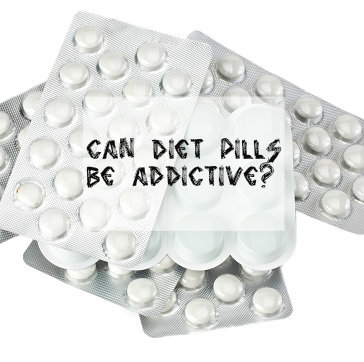 One prescription drug that works as an appetite suppressant is called phentemine.
One prescription drug that works as an appetite suppressant is called phentemine.
Another FDA-approved medication, which is available without a prescription, is called Alli. It aids in weight loss by blocking the body’s absorption of dietary fat. Other supplements claim to be able to block fat, but have not been evaluated by the FDA. They include ingredients like chitosan and guar gum.
The third and most dangerous type of diet drug includes stimulants. Stimulants are drugs that boost your metabolism causing you to burn more calories. Controversial pills, such as those that have ephedra as an ingredient, are often stimulants. Bitter orange is another herb you might see as an ingredient in a stimulant diet pill. Amphetamine, which is a prescription drug used to treat ADHD and narcolepsy, is often abused by people trying to lose weight because it is a powerful stimulant.
Are Diet Pills Addictive?
Most of the ingredients found in diet pills are not chemically addictive. In other words, unlike addictive drugs, they do not cause physiological changes to the brain that can lead to dependence. Stimulant drugs are an exception, especially amphetamine. Anyone abusing amphetamine to lose weight is putting herself at risk for addiction.
While most of the diet pill ingredients are not addictive, there is always the possibility of a psychological dependence on these medications. If someone you love is taking any type of diet pill more often than seems normal and is obsessing over her weight, she may have a type of addiction. She may also have an eating disorder or be on the path to developing one. It is important to intervene before she goes too far and really puts her health at risk.
What Are The Side Effects Of Taking Diet Pills?
There are plenty of potential side effects from all types of diet pills. Some are just uncomfortable, but others are dangerous. The riskiest side effects come from stimulants because they cause an increase in heart rate and blood pressure. When combined with alcohol, stimulants are especially dangerous. Other less serious side effects include headache, diarrhea, nausea, gas, constipation, insomnia and upset stomach.
How Can I Help If I Know Someone Who Is Overusing/Misusing Diet Pills?
If you know someone who is taking risks with diet pills, step in and express your concern. Educate your friend about the dangers of these pills, especially if she is taking stimulants. Encourage her to seek professional therapy so that she can learn how to have a healthy attitude toward her weight and her body. The best way to lose weight is through diet and exercise, so offer to be her partner in making good food choices and in working out.
Read More About Prescription Stimulant Abuse In Moms…And The Dangers
13 Mar 2014
Pregnant And Addicted – What Now?
Battling addiction and striving to achieve sobriety are some of the most difficult challenges a person can face. Addicts have to suffer through terrible withdrawal symptoms while detoxing, go through therapy and rehab and then face a lifelong struggle with the prospect of a relapse. Now imagine facing this demon while pregnant; it is the struggle that too many women encounter. Along with the difficulty of coming clean, they face the shame and embarrassment, the possibility of losing their children and unique health challenges. Getting sober is essential for the health of the mother and the baby.
What Are The Barriers To Treatment For Expecting Mothers?
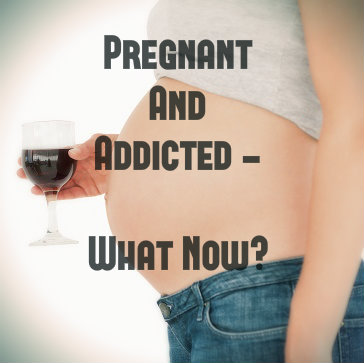 For many women who find themselves both addicted to drugs and unexpectedly pregnant, the idea of getting help is a daunting one. Women in this position tend to feel extreme guilt, shame and fear. A pregnant woman needing addiction treatment may avoid getting help for fear of being judged and vilified. She may also face the fear of losing her newborn after admitting to being an addict.
For many women who find themselves both addicted to drugs and unexpectedly pregnant, the idea of getting help is a daunting one. Women in this position tend to feel extreme guilt, shame and fear. A pregnant woman needing addiction treatment may avoid getting help for fear of being judged and vilified. She may also face the fear of losing her newborn after admitting to being an addict.
What addicted pregnant women need is compassionate care from doctors and other health professionals who understand the special needs of these patients. Without care, these women and their children will suffer. For instance, some women may try to take the matter into their own hands and quit cold turkey, which can actually be harmful to the baby.
The Consequences Of Addiction On The Fetus
For the unborn child, the consequences of a mother’s addiction can be serious. The baby will most likely be born with neonatal abstinence syndrome. This is a collection of symptoms caused by the drugs the mother uses. The baby is born addicted and then experiences withdrawal. Symptoms may include blotchy skin, poor feeding habits, irritability, diarrhea, high-pitched crying, seizures, insomnia, slow weight gain, fever, sweating, trembling and vomiting. Withdrawal in the baby is not the only concern; drug use can lead to complications during labor and delivery.
Pregnant Addicts On The Rise – Finding Solutions
As the number of people in the U.S. addicted to opioids (prescription painkillers and heroin) rises, the number of mothers and infants affected also rises. Statistics indicate that the number of babies born with neonatal abstinence syndrome has more than doubled in the last six years. In 2012, nearly 6 percent of pregnant women were using illegal drugs. The increases are being seen across the country and among all demographic groups. The healthcare costs are rising with the number of addicted babies.
Healthcare professionals are stepping up and looking for solutions to treating these women and their babies. With compassion and tested methods for treatment, they can help women feel comfortable asking for help with addiction. More hospitals and addiction centers are offering specialized care for pregnant women as the problem grows. Although many experts in the past have considered use of maintenance drugs, like methadone, to be bad for the unborn child, doctors now know that maintenance is often the best option. Withdrawal in the pregnant mother can be very dangerous for the baby.
Many of these new programs include not just cutting-edge treatment for addiction in the mother, but also the goal of continuing that care after the baby is born to ensure the mother has the best chance of staying sober and caring for her children. The programs also include plans for reducing complications during delivery and maximizing the odds of having a healthy baby. Many plans also help these new mothers with family planning and parenting skills, as well as long-term care for themselves and their children. With good care that is specialized for their needs, pregnant women have hope for a successful birth and healthy child.
Read More About Drinking During Pregnancy And Find Out Why Women Continue To Drink
Being an addict takes a serious toll on your body. The longer you gave in to your cravings for drugs or alcohol, or both, the more damage you have done. The good news is that once you are in recovery, you can begin to reverse that damage and restore your health to a significant degree. To make the most of your recovery, to feel better and to avoid relapsing, turn to a healthful diet and lifestyle.
How Does Substance Abuse Impact Health?
How your addiction has affected your body depends on the drugs that you abused. In general, however, substance abuse impacts your health in two ways: the drug itself causes harm and your lifestyle likely causes you to neglect nutrition.
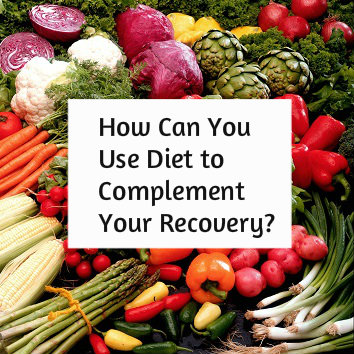 Opiates can cause a lot of gastrointestinal symptoms like constipation, nausea, and vomiting. Alcohol causes deficiencies in certain vitamins, which can lead to anemia and damage to your nervous system. Alcohol can also cause high blood pressure, diabetes, and liver damage. Meth, cocaine, and crack all cause weight loss and malnutrition. They also cause dehydration, insomnia, and memory problems. Marijuana use can cause you to overeat, and as a result, to gain excess weight.
Opiates can cause a lot of gastrointestinal symptoms like constipation, nausea, and vomiting. Alcohol causes deficiencies in certain vitamins, which can lead to anemia and damage to your nervous system. Alcohol can also cause high blood pressure, diabetes, and liver damage. Meth, cocaine, and crack all cause weight loss and malnutrition. They also cause dehydration, insomnia, and memory problems. Marijuana use can cause you to overeat, and as a result, to gain excess weight.
How Can Diet Aide In Recovery?
When you first detox or start to get help for your addiction, diet and nutrition may be the furthest things from your mind. Your main goal is to stop using. Once you feel more secure in your recover, however, it’s time to think about repairing your body. When you feel better because of good nutrition, you will be less likely to relapse. There are a few general guidelines for the most important components of a complete and healthful diet:
- Limit fat intake – A high-diet is unhealthy and can lead to weight gain. Stick to healthy fats, such as those that come from plant sources. Olive oil, avocados, and coconut are all good sources to include as well as limited amounts of animal fats.
- Get plenty of protein – Protein is essential for energy and for building muscle. It is essential to get enough protein in your diet to start repairing some of the damage caused by drugs and alcohol. Include lean protein in your daily diet (e.g., fish, poultry, eggs, nuts and beans).
- Consume whole grains -Whole grains are an important energy source and are much better for you than refined grains. They provide lasting energy, a lot of fiber, and vitamins and minerals. Look for whole grain breads and pastas as well as oatmeal and brown rice.
- Include fruits and vegetables – Produce is an important source of nutrients. Eat a variety of fresh vegetables and fruits. Where fresh produce is limited or too expensive, go with frozen over canned.
- Consider vitamin supplements – Addicts are often deficient in B vitamins in particular, so consider getting a high-quality B complex supplement to take each day.
What To Eliminate From Your Diet While In Recovery
In addition to including healthful foods in your diet, it is important to eliminate certain things. Avoid sugar, as it can cause cravings and can become a substitute addiction. Natural sugar from fruits will be enough to meet your nutritional needs. Also avoid caffeine for similar reasons. Stay away from processed foods as much as possible; they can place extra stress on your liver. Keep your diet as full of natural, whole foods as possible for maximum benefit.
Remember as you work through your recovery that the greater your overall health, the greater your odds of avoiding relapse. A healthful diet will help you to feel better and will motivate you to keep making positive changes in your life. If you are unsure of how to best improve your diet, see your doctor for guidance or a referral to a professional nutritionist.
Read More About Diet And Exercise Aiding In Recovery
Police officers are often the first medical responders on the scene of drug-related overdose emergencies. A new study published online in the journal Drug and Alcohol Dependence shows that the preparedness of police officers when responding to an overdose could affect the outcomes for the individual as well as the community.
The study focused on areas of Rhode Island and Connecticut that have been experiencing growing numbers of prescription opioid overdose emergencies. Many of these were relatively sparsely populated suburban and rural areas, where emergency medical technicians (EMTs) and paramedics are a more limited resource. In these areas, police officers are more likely to be first medical responders than in areas with more hospitals and associated emergency medical personnel.
Traci C. Green, Ph.D., a research scientist at the department of emergency medicine for Rhode Island Hospital, was the lead investigator for the new study. Green and her fellow researchers conducted interviews with law enforcement officers. The interviews included questions about personal attitudes toward drug users and victims of overdoses, as well as questions about the resources and protocol for police officers who are the first responders to the scene of an overdose.
Study Finds Frustration And Confusion Among Law Enforcement
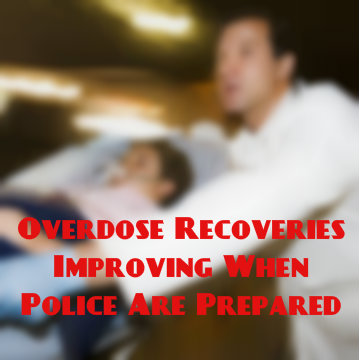 They discovered a range of personal attitudes among police officers toward drug users, as well as confusion about what treatment police officers are expected and authorized to perform at the scene of drug-related emergencies. Many police officers are equipped only with basic first aid and CPR training, and can do little to save the life of an overdose victim in critical condition.
They discovered a range of personal attitudes among police officers toward drug users, as well as confusion about what treatment police officers are expected and authorized to perform at the scene of drug-related emergencies. Many police officers are equipped only with basic first aid and CPR training, and can do little to save the life of an overdose victim in critical condition.
Some police officers revealed negative attitudes about people who use drugs, particularly repeat offenders. Others were empathetic toward those suffering from drug addiction but also expressed frustration with the lack of comprehensive treatment and other resources for drug addicts. Quite a few believed that the cycle of addiction had a significant negative impact on the individuals in their community as well as on the community as a whole. Many police officers in the study also revealed frustration about the limited training and resources they themselves have when responding to an overdose scene.
Frustration with the growing problem of prescription drug abuse and overdose is understandable. In 2010, more than 8.76 million people reported abusing prescription medicine, and in 2008, there were more than 36,000 deaths from drug overdoses, most of those caused by prescription drugs. In fact, prescription painkillers in the form of opioids are responsible for three quarters of all overdoses from prescription medications. Cocaine and heroin combined resulted in fewer overdose deaths than prescription opioids.
Giving Police Officers Tools And Training For Overdose
In some communities around the country, police officers and other responders are given Naloxone, which is the standard drug overdose antidote used by paramedics. Naloxone helps to reverse the effects of prescription opioids and to restore breathing for people in respiratory arrest. The current White House Office of National Drug Control Policy supports training more responders in the use of this tool and making it available to those in a position to be first medical responders.
The responses in the Rhode Island Hospital study suggest that police officers will be more effective in the role of first responders with increased training and improved understanding of their responsibilities. In more rural areas, police officers may be the only trained medical responders who are able to get to overdose victims during the critical window when Naloxone or other treatment methods are most likely to be effective.
Further empowering police officers to be more effective responders may also help to improve the relationship between law enforcement and the community in many areas. It may relieve some feelings of frustration and helplessness on the part of police officers by allowing them to have a more active role in saving lives. It may also improve community views on law enforcement when officers at the scene are able to administer life-saving aid. Some of the police officers interviewed during this study felt that the ability to administer Naloxone could be a critical element in positive police-community relations.
Read More About ER Visits Rising Due To Drug Use
Seniors make up 13 percent of the population of the United States, yet they account for more than one-third of the prescription medications. One-half of all seniors were taking at least three prescription medications as of the year 2000, up from one-third in 1988.
With so many seniors taking prescription drugs, it shouldn’t be surprising that they are a part of the rising problem of prescription drug abuse. Nevertheless, senior drug abuse remains a largely hidden problem, in large part because elderly people do not fit the common profile of someone dealing with drug abuse or addiction.
In the coming decades, this problem can only be expected to grow. Seniors are one of the fastest growing segments of the population, as the first wave of the baby boom generation has reached senior citizen status. By 2030, seniors are expected to make up one-third of the country’s population.
What Are The Hidden Symptoms Of Senior Addiction?
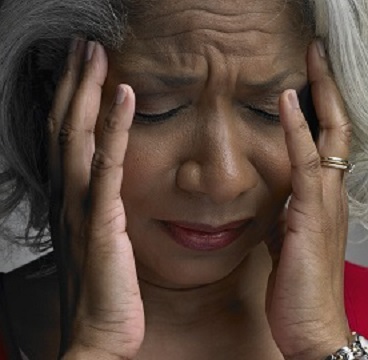 Identifying the signs and symptoms of drug problems in seniors presents various challenges. One of the biggest difficulties is the fact that a number of these signs and symptoms can mirror normal signs of aging.
Identifying the signs and symptoms of drug problems in seniors presents various challenges. One of the biggest difficulties is the fact that a number of these signs and symptoms can mirror normal signs of aging.
Among the symptoms of drug use that may be mistaken for signs of aging are disorientation, poor balance, memory loss, chronic boredom, depression, shaky hands, poor balance and mood swings. Since seniors do not fit the stereotypical profile of someone with drug problems, recognizing when such symptoms spring from drug use and not just aging is a challenge for loved ones and health professionals alike.
Drug Abuse Vs. Misuse – Is There A Difference?
When examining drug problems among seniors, it is helpful to make the distinction between drug abuse and drug misuse. Drug misuse refers to the use of prescription medications in a way that does not comply with the prescription instructions. Drug misuse can be entirely unintentional, and the result of unclear instructions or confusion. Drug misuse can also be intentional; for example, patients may take more than the prescribed dose without consulting their doctor if they feel that the prescribed dose is not having an effect. In general, the term misuse is used to refer to the incorrect use of legitimately prescribed drugs, with the intent of treating an established medical problem.
In contrast, drug abuse refers to people who use drugs for recreational purposes. They may abuse illegal drugs that have no therapeutic purpose, or they may use therapeutic drugs incorrectly in order to achieve a euphoric high or some other pleasurable feeling.
Both drug misuse and drug abuse can result in drug dependence and other negative side effects. However, drug misuse is usually the easier problem to solve. The most common reason for drug misuse is an ineffective treatment plan, and the problem will usually disappear if treatment is revisited and a more effective plan put in place.
Drug abuse among seniors is much less common than drug misuse. Nevertheless, the problem does exist for 12 to 15 percent of elderly people who seek medical help.
What Are The Commonly Abused Drugs Among The Elderly
Opioid drugs, depressants, stimulants, benzodiazepines and over-the-counter (OTC) medications are the drugs most frequently abused among seniors. Opioids are typically prescribed for pain relief; depressants are prescribed for anxiety and sleep disorders; stimulants are prescribed for narcolepsy and ADHD; and benzodiazepines for anxiety and insomnia.
Opioids are particularly dangerous drugs to abuse or misuse because they are extremely addictive. These medications are chemically similar to the illegal drug heroin, and can be just as addictive as heroin when used incorrectly.
After prescription drugs, alcohol is the most commonly abused substance among the older adult population. OTC medications can react poorly with alcohol, leading to negative consequences that would not otherwise be present with these medications. They can also react badly with prescription drugs.
Find Out The Strategies To Address Senior Drug Problems
Tailoring education, consumer information and screening efforts to older adults are some key steps to reducing drug abuse among the elderly.
Although seniors are the most significant consumers of prescription drugs, promotional and educational materials are often not geared toward them. Helpful tools might include educational materials available in large print and drug diaries to help track medications.
Educational efforts aimed at reducing drug abuse should also keep seniors in mind. Teenagers aren’t the only segment of the population that needs education about drug and alcohol abuse. The more society recognizes that seniors are an at-risk population, the more education and screening efforts may be available in retirement communities, senior centers, city parks and recreation departments, and other places where the elderly can benefit.
Read More About Why Drug Use Is Surging In Baby Boomers


